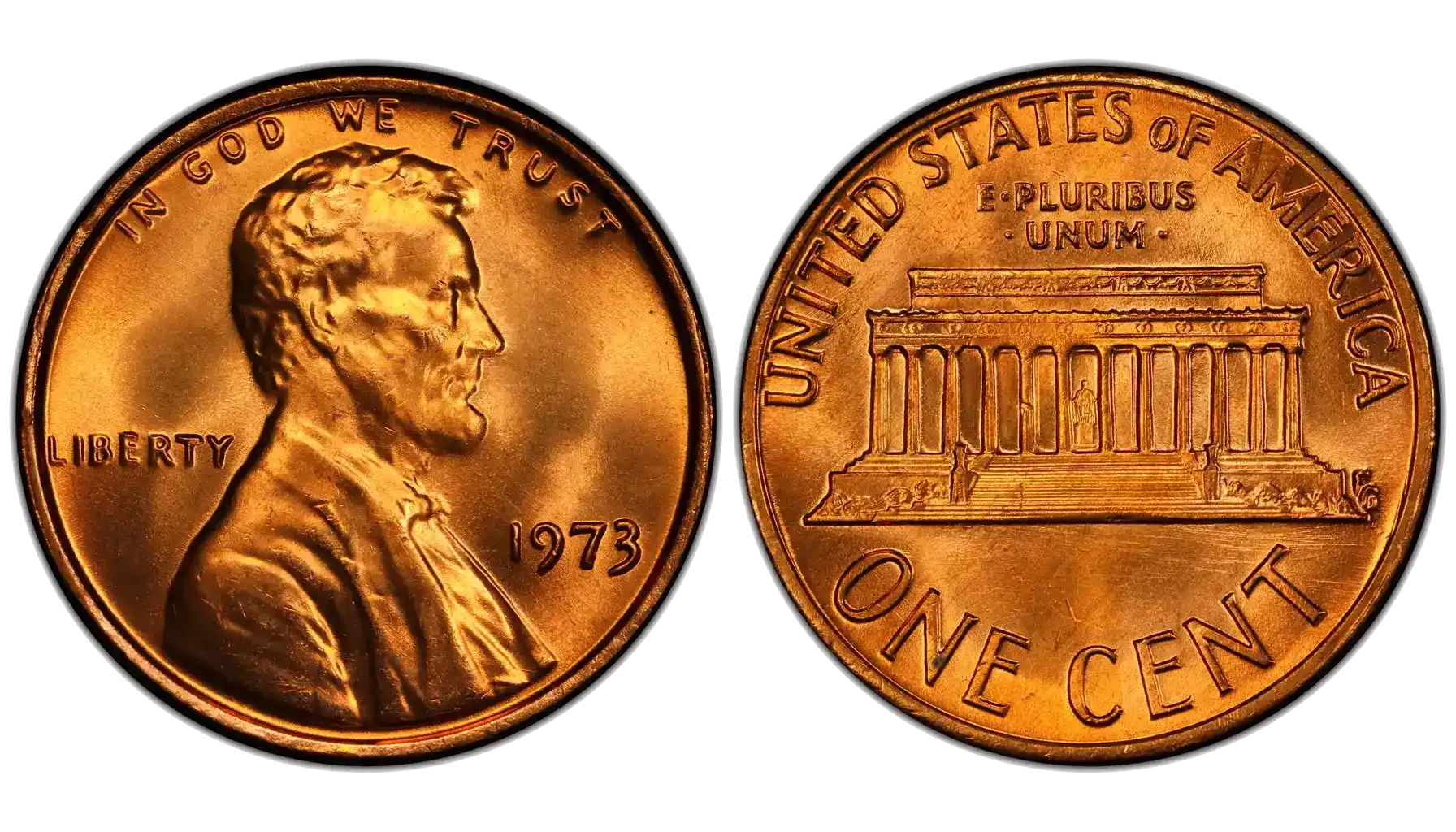Contents:
Wheaties are on the ear of collectors for years now. And for sure, you also hear about them. But among all the coins of the series, special attention of collectors traditionally attracts the specimens that retained their original red color. They stand out sharply against the usual darkened specimens, and it is the color that often becomes the decisive factor affecting the value of a 1925 penny.
Fortunately, today you can identify the coins in a couple of clicks to find out certain nuances. For example, did you know that the 1925 s wheat penny value is higher than its Philadelphia or Denver counterparts? Thus, finally, how much is a 1925 wheat penny worth? The answer depends on many factors: color, condition, rarity, mintage errors, and mint.
Today we are just looking for the answer to “how much is a penny from 1925 worth?”, what other factors should be considered when evaluating it, and how 1925 D penny value, 1925 S penny value, and 1925 penny no mint mark value differ.
Color Matters: Red, Red-Brown, Brown — Not Just Hues
The color of copper coins is not a matter of aesthetics, but one of the most important factors in assessing value. In numismatics, it is recorded as part of the coin's condition, especially in certification. Let's understand the differences between the three key categories of color:
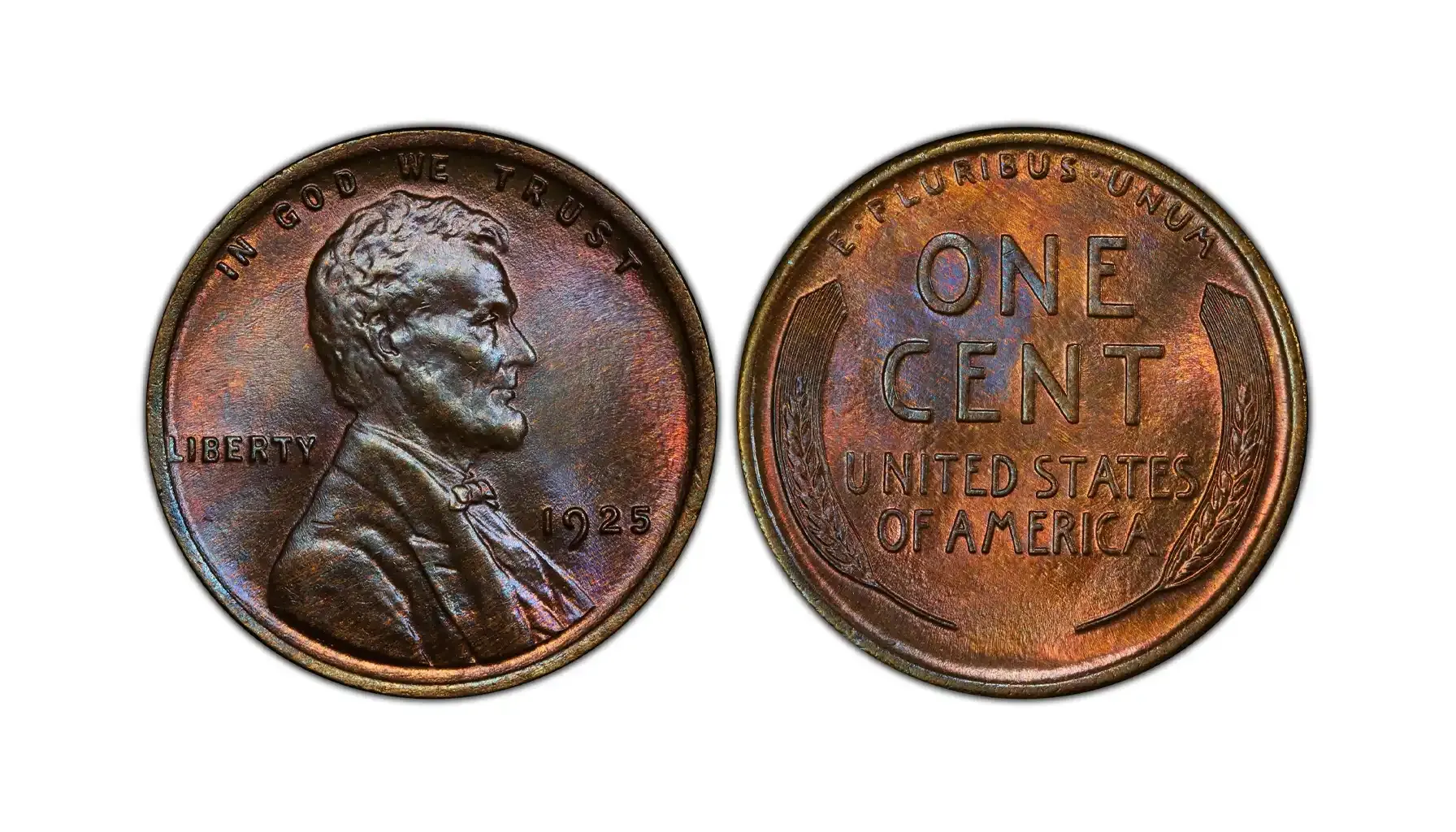
Brown (BN) - A coin with a solid brown patina. This is the most common case for the 1925 Lincoln penny (especially if it has been in circulation). Such specimens are inexpensive, even in high grades.
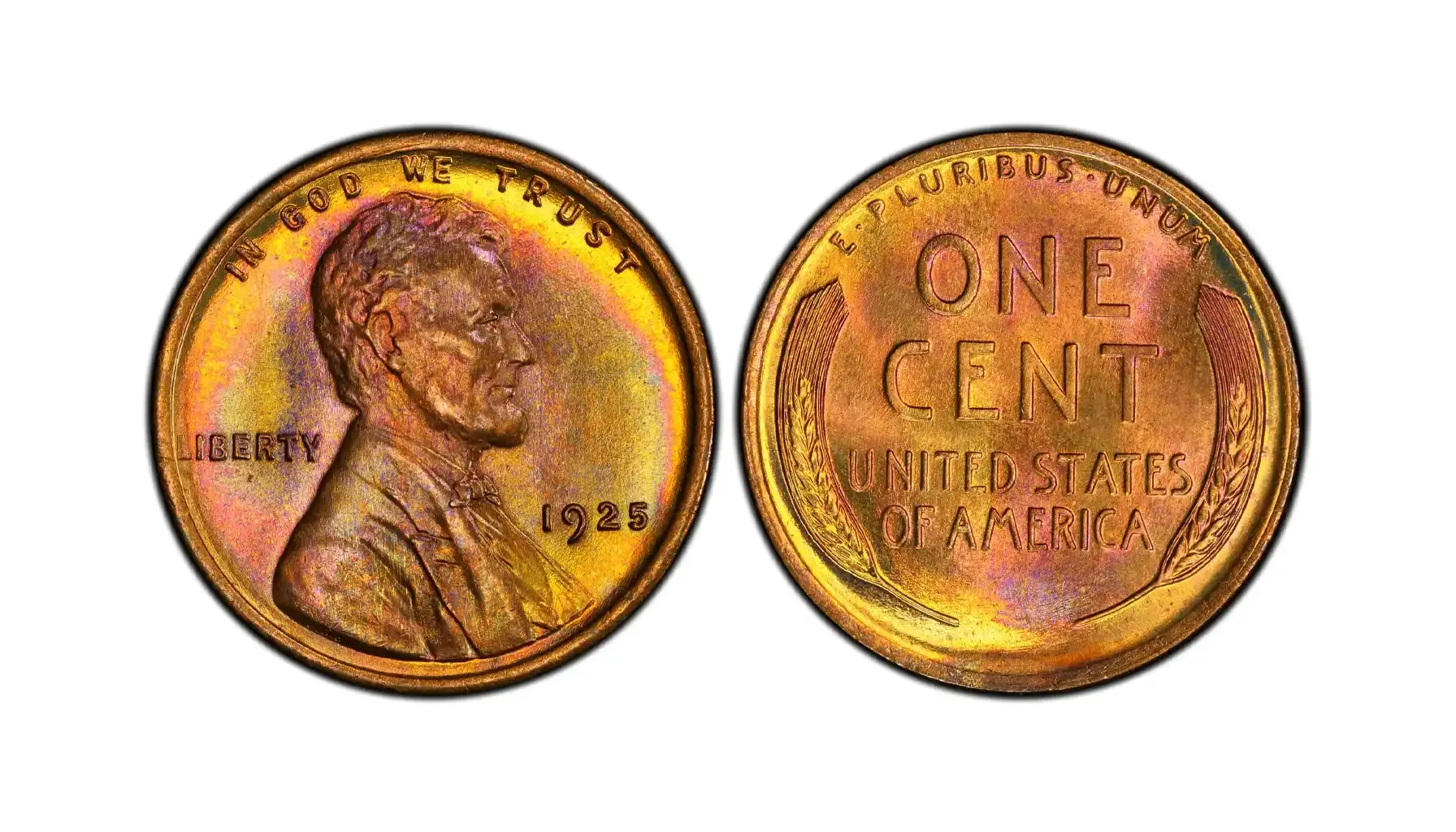
Red-Brown (RB) is an intermediate variant: the surface has partially retained its reddish color. This value of 1925 wheat penny can be 1.5-2 times higher than Brown.
Full Red (RD) - bright red original minting shade, almost without darkening. These are the coins that are most often sold at auctions for impressive sums.
Going a little ahead for your understanding, when answering the question of how much is a 1925 penny worth, you should take into account that a coin in MS63 Brown can cost $15, and in Full Red - already $80 and higher. Thus 1925 D Wheat penny value in red color will be higher than the similar brown one, even at the same grade. However, not only the shade affects the value of the coin.
Comparing: Circulated vs. Full Red
The condition of a coin plays a key role in determining its value. Circulated coins usually have wear and darkening of the surface, which reduces their value. While coins in MS (Mint State), especially those with a bright red hue (Full Red), are valued much higher.
Circulated (G/VG):
Wear on parts: noticeable, especially in high points.
Color: usually brown (Brown) because of oxidation of copper.
Full Red (MS60 and higher):
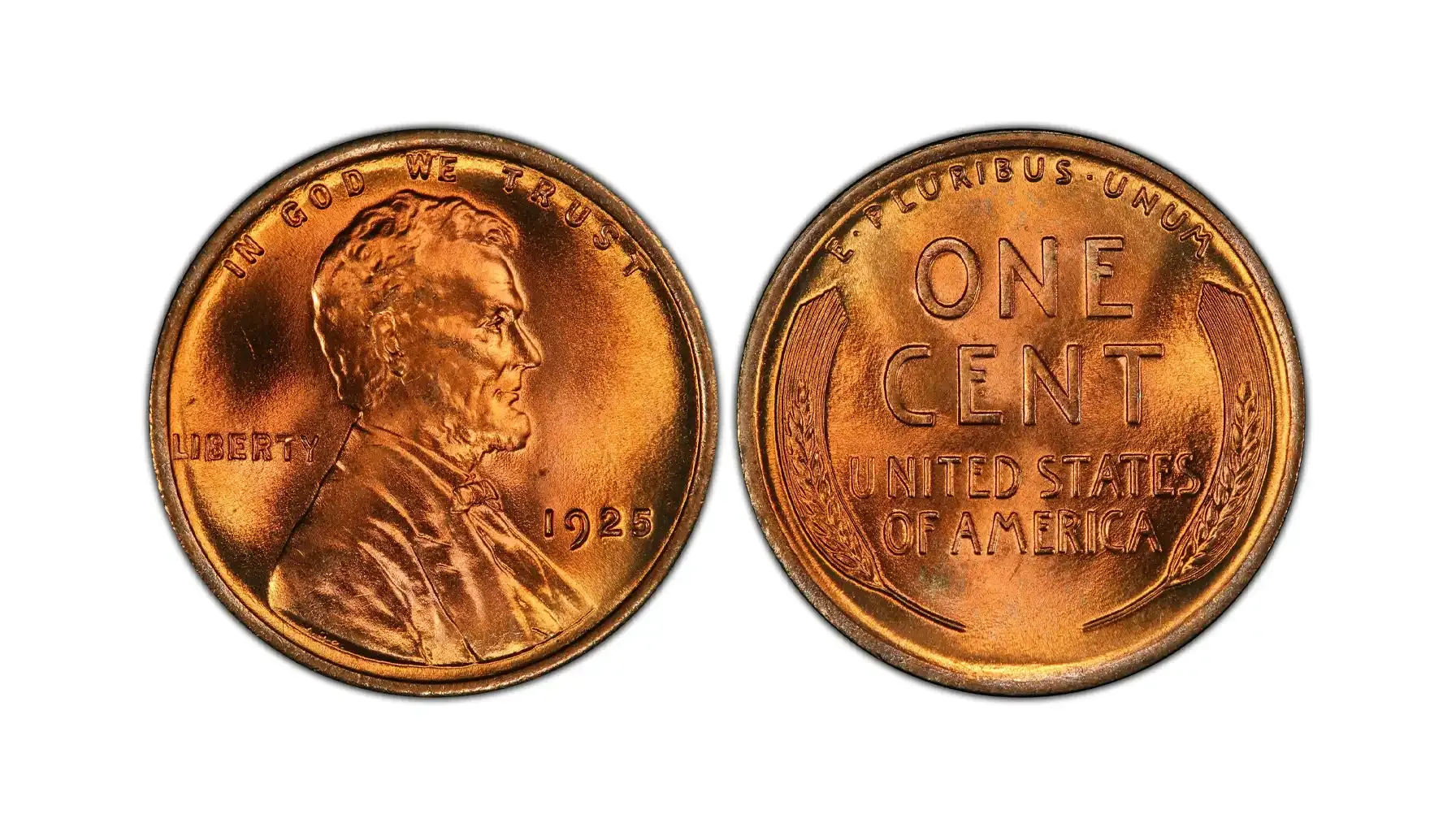
Condition: no wear, bright red luster.
Rarity: such coins are extremely rare, especially for 1925.
Coins from circulation rarely retain their red hue due to environmental effects. However, even worn specimens, such as the coin 1925 S Lincoln Wheat penny - G/VG grade, can be of interest to collectors because of their historical value and rarity.
Complementary Factors Affecting Penny 1925 Value
There are other parameters that significantly affect the value of the 1925 penny:
Mint - as we will see below, the cost of 1925 wheat penny S will be higher than others because of the smaller mintage.
Presence of minting errors - no matter how paradoxical it may sound, but a coin with flaws is more interesting to collectors and actively sought after and can take a worthy place in the collection.
Rarity of a combination of factors - for example, 1925 Lincoln Wheat penny with S mint mark in MS65 Red condition from San Francisco is almost a numismatic “legend”.
Is a 1925 wheat penny worth anything today? In practice, yes, and the value of a 1925 penny can range from 10 cents to several hundred dollars - it all depends on these factors.
Price Geography and 1925 Features: Philadelphia, Denver and San Francisco
When accessing 1925 penny value today, the answer cannot be given without specifying the mint. The coin was minted at three mints: Philadelphia, Denver and San Francisco. Each variety has its own features, mintage and value. Let's analyze it in detail.
1925 No Mint Wheat Penny Value

Coins without mint markings are the most common type among all 1925 varieties.
Circulation: 139,949,000 copies
Features: Weak minting, especially around the date and “LIBERTY” inscription, making it difficult to preserve fine details
Value: Generally low, especially in worn condition
Rare cases: How much is a 1925 no mint mark penny worth? In MS63 RD, the price can go for up to $80.
1925 D Penny Value
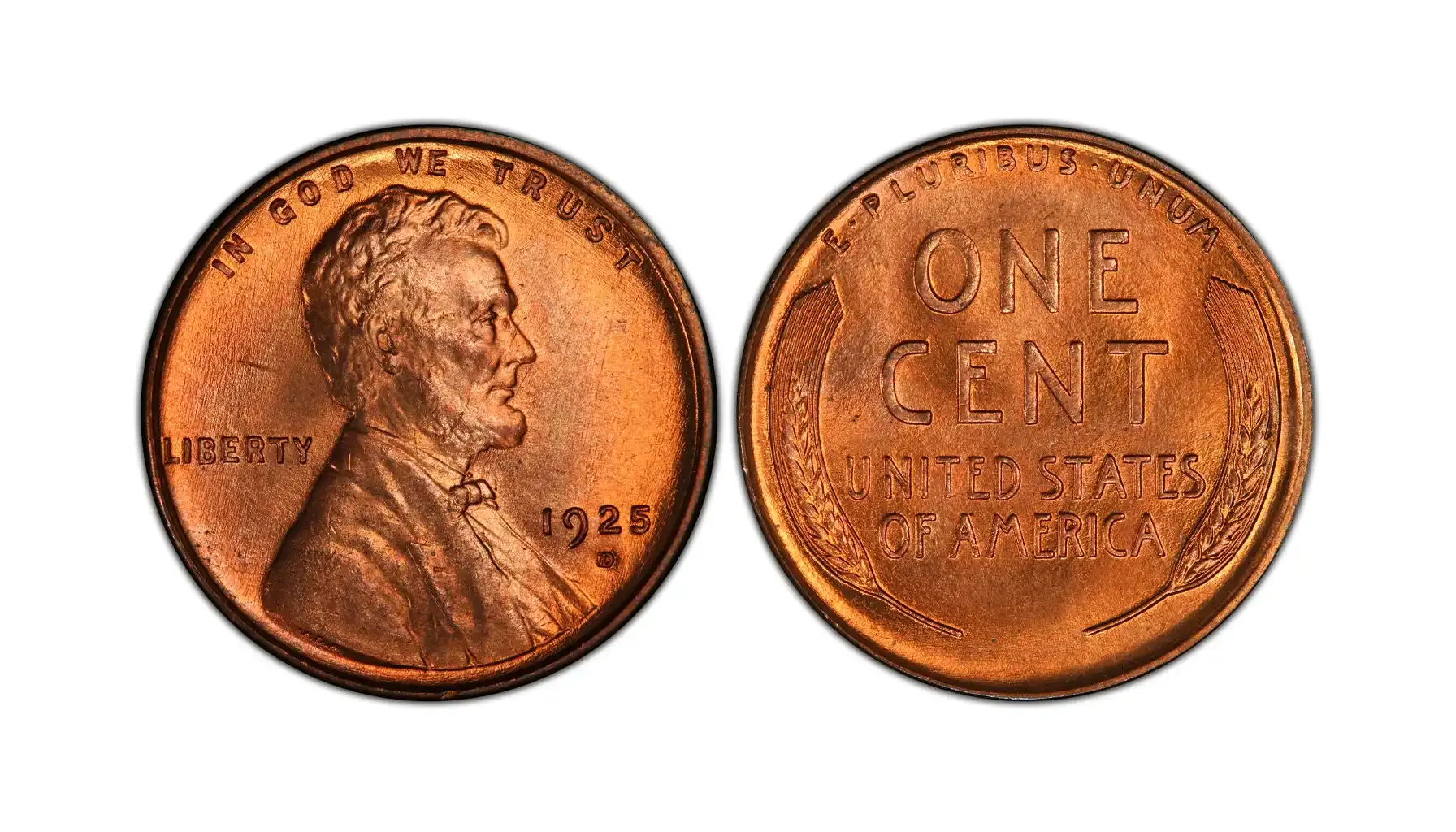
If you see a “D” under the date, it is a 1925 D wheat penny – a Denver-issued variety. These coins are rarer than the Philadelphia coins, and their minting quality is slightly higher.
Circulation: 22,580,000 copies.
Features: Better detail, especially Lincoln's portrait.
Value: This value of a 1925 Wheat penny is moderately high, especially in MS condition
Rare cases: Minting errors and Red hue significantly increase the value
1925 S Penny Value

The most interesting and rare are the 1925 S Lincoln cent. These coins were minted in smaller numbers and are found in good condition far less often.
Circulation: 26,380,000 copies
Features: Often suffers from weak minting, especially in the area of Lincoln's cheeks and wheat ears
Value: Is a 1925 penny worth anything? Yes, it is the highest of all varieties.
Rare cases: Copies with a bright red hue and minimal wear are especially sought after. The 1925-S Wheat penny errors are especially valuable - among them are stamp offsets, splits, and rare repunches. Their price can exceed $500 and significantly more.
Base Price Values
Mint | G/VG | XF (Extra Fine) | MS60 BN | MS60 RB | MS60 RD | MS65 RD |
Philadelphia | $0.10 – $0.25 | $1–$3 | $10–$15 | $20–$30 | $40–$70 | $200 – $500 |
Denver ("D") | $0.20 – $0.40 | $4–$7 | $20–$35 | $40–$60 | $75–$120 | $800 – $2,500 |
San Francisco ("S") | $0.50 – $1.50 | $8–$15 | $90–$150 | $120–$200 | $250–$400 | $10,000– $35,000+ |
Note: Prices are approximate and depend on coin condition, color (Brown, Red-Brown, Red), minting errors and certification. Coins with errors, such as 1925 Wheat penny error examples, may exceed the listed values.
1925 Penny Error List: Can This Coin Surprise You
Although 1925 is not considered an outstanding year for flaws, collectors are still aware of a few interesting minting errors.
What is a 1925 penny worth if there are any flaws on the coin that could theoretically increase the interest and price of the specimen? Now is the time to find out.
1925-S Lincoln Cent — Double Die Obverse (DDO)
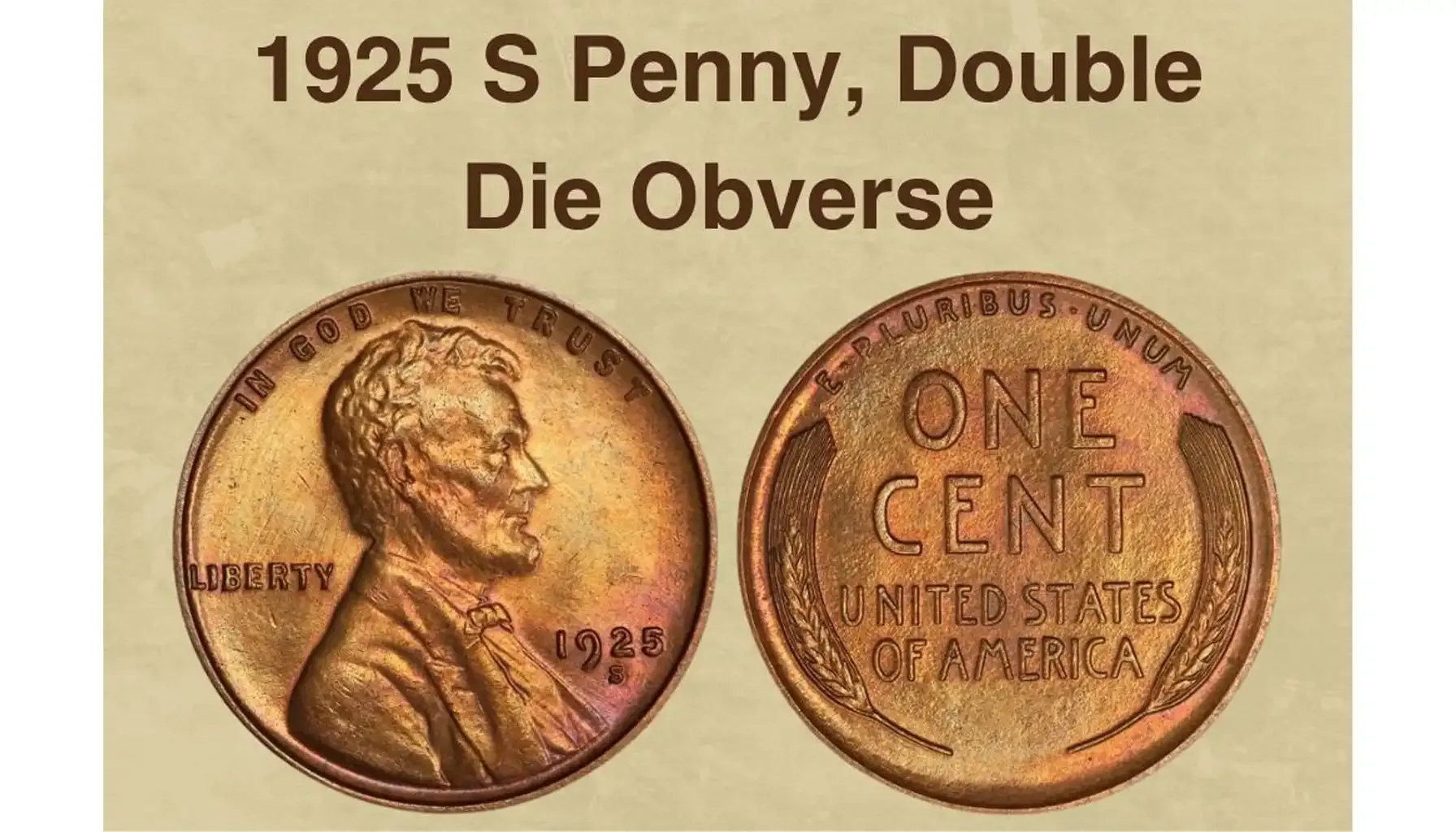
Doubled letters in the inscriptions on the obverse, especially in the words “IN GOD WE TRUST”, “LIBERTY” and the date
The effect is almost visible to the naked eye and requires a magnifying glass or microscope
A confirmed, but rare variety
This type of error is considered one of the most coveted finds among collectors interested in what is a 1925 Wheat penny worth. Even the brown, lowest grade cent can be valued at around $20, and specimens in XF45 condition can be valued at around $110.
The most expensive of the known specimens - a coin in MS65 (brown) grading - is valued at an impressive $1,450. Such specimens rarely hit the market and instantly cause a stir among numismatists.
1925-S Lincoln Cent — Repunched Mint Mark (RPM FS-501)

Re-applying of the “S” mintmark, visible under magnification
Clarification: FS-501 variety, confirmed by professional examination
Relatively more common than DDO, but still valuable
Even in its low condition, this brown exemplar can cost around $27. If we are talking about a quality XF45 specimen, the price reaches about $120. MS60 graded coins sell for around $260. Interestingly, one of the rarest specimens - a bright red coin in MS65 condition - was valued at a record $43,000, making it a real trophy.
1925 Lincoln Wheat Penny — Lamination and Cud Errors

The simultaneous presence of two errors - lamination and cud (stamp defect).
Lamination is noticeable on the obverse, especially in the area of the inscription “LIBERTY”, where the letter “T” practically disappears due to a defect in the blank.
The cud error is evident on both sides in the form of characteristic convex areas in the coin.
This is a highly unusual case of combining two minting errors on the same coin. Despite the overall condition of the coin (signs of wear, handling), this 1925 Wheat penny no mint mark value was priced by the seller on eBay at $2,499.00. This valuation is due to the uniqueness of the defects rather than the condition.
1925 Lincoln Wheat Penny — Rim Error “L” in LIBERTY
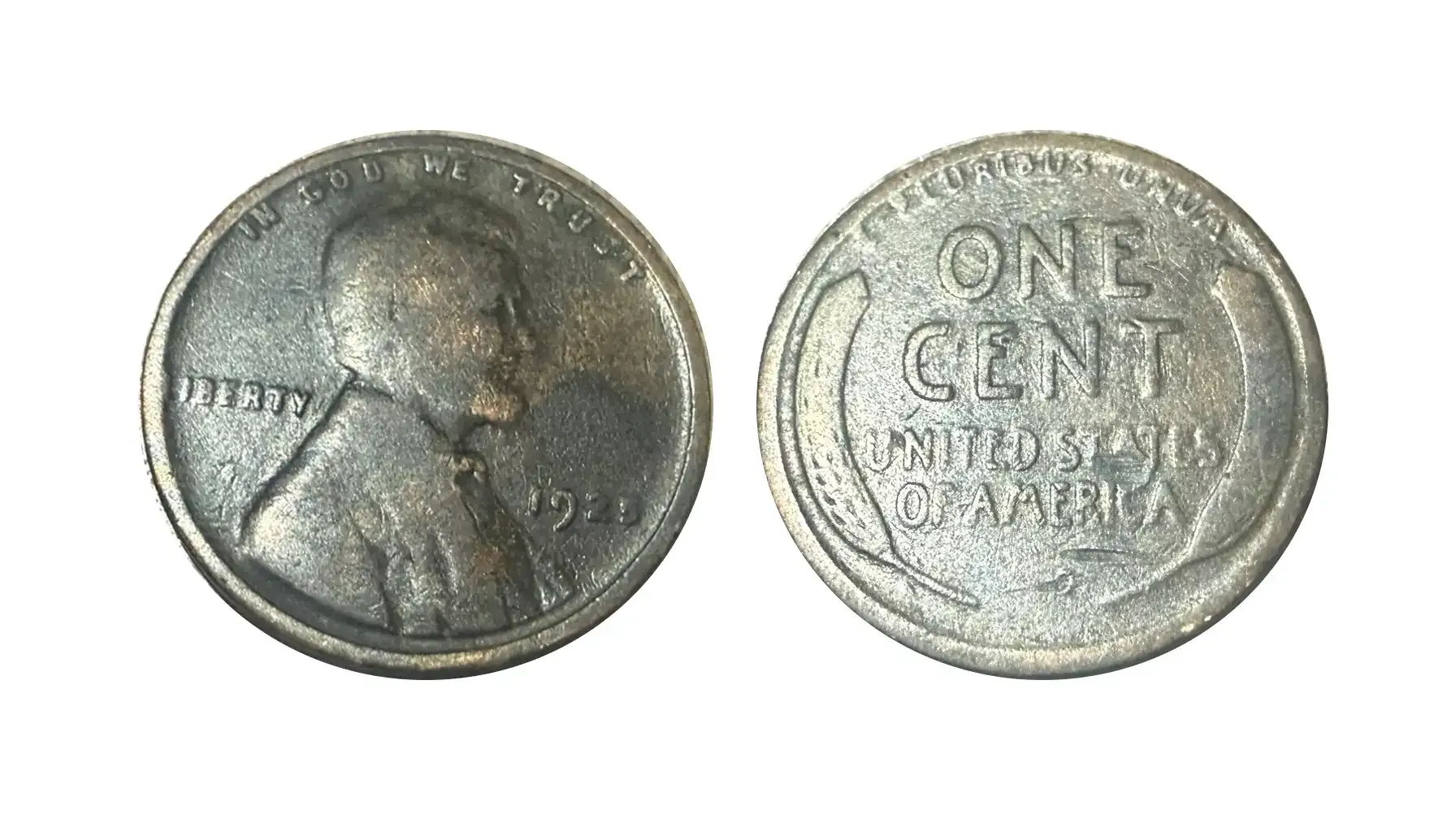
Erroneous edge: part of the letter “L” from the word “LIBERTY” is noticeably displaced to the side and as if “extruded” to the edge of the coin.
This indicates a fault in the centering of the blank at the time of striking with the stamp - a so-called misaligned die.
Such errors with the capture of design elements on the die are not common and are especially valuable if they affect key details, as in this case. Despite the overall average condition of the coin, a specimen with this error was offered on eBay for $500.
Preservation Is a Key of Value
Even a rare coin can lose value without proper care. For example, the 1925 Wheat penny value no mint mark is highly condition dependent: worn specimens are of no interest to collectors.
Tips:
Wear gloves - don't leave fingerprints.
Store correctly to save value in special containers (PVC-free).
Avoid moisture and temperature extremes.
Do not clean coins.
Beyond that - use modern tools. The Coin ID Scanner app will help you not only determine the approximate 1925 penny value no mint mark (or any other specimen), but also offers an entire blog section with collection care tips, rare issue reviews, and storage recommendations.
Wrapping Up
The year 1925 presented collectors with several interesting varieties of the Lincoln Wheat Penny. But grading and valuation of these coins requires a careful attitude: it is important to consider the many reasons we are talking about above. Even if you have a simple-looking coin in your hands, it may well turn out to be worthy of attention - especially if it has characteristic errors or an unusual hue.

